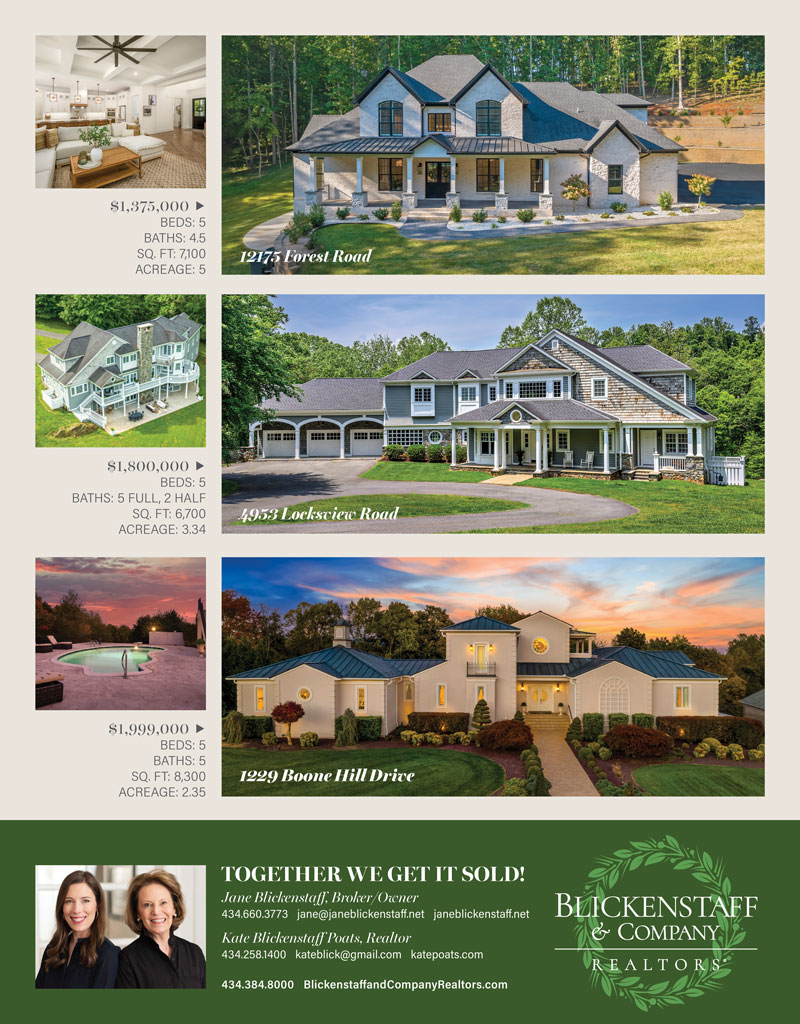HVAC | Your Key to Indoor Air Quality & Comfortable Living
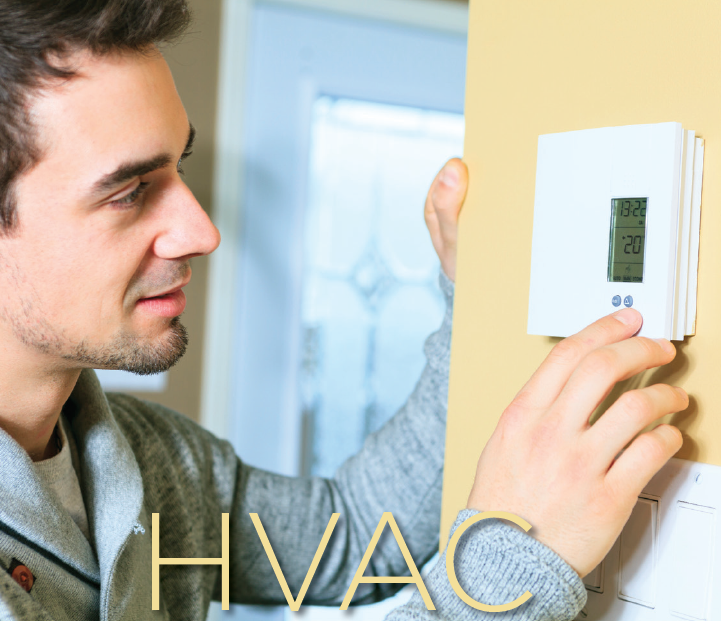
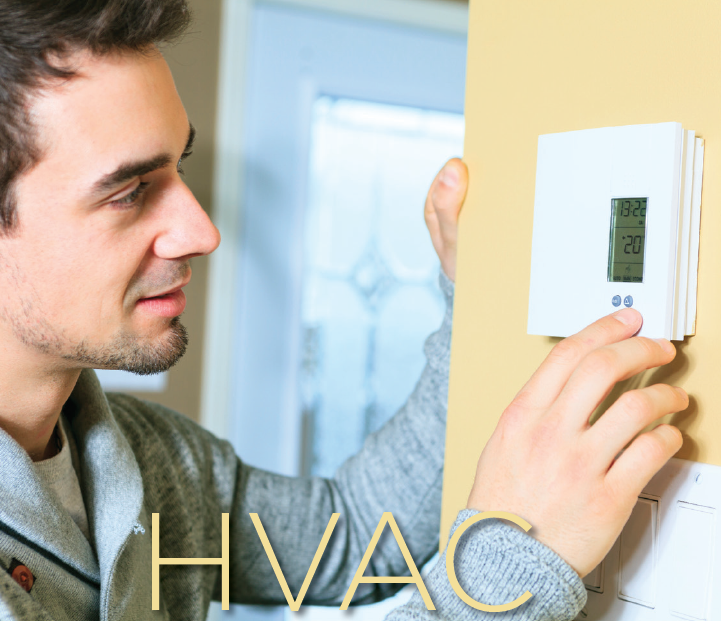
Despite having been saddled with a rather unglamorous acronym, your home’s “HVAC” system—Heating, Ventilating & Air Conditioning—is the big kahuna when it comes to living chill-free, sweat-free and dust/allergy-free. Indeed, “HVAC” could just as easily stand for “Indoor Air Quality and Comfort” if you’re willing to take liberties with acronym assignment.
After all, your HVAC system, hidden away in the basement, attic or utility closet, is heavily responsible for keeping your home comfortable—snuggy warm during the wintry months, perspiration-free cool in the heat of the summer, and reasonably free of germs, airborne allergens and other irritants year-round.
As such, it deserves periodic attention to keep it purring.
“Checking filters once a month will quickly give homeowners a feel for how often they should be changed,” says David Moseley of Terrell E. Moseley, Inc., Heating and Air, which has served Lynchburg and surrounds for 81 years. “While homeowners with pets or with lots of dust-raising activity—a house full of kids, for example—may find their filters clog faster, two to three filter changes a year is typical in our area.”
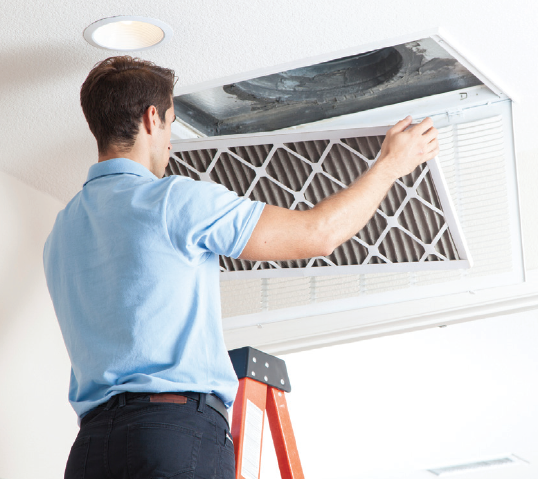 As with your cars and most other mechanical equipment, annual inspection and maintenance by qualified professionals is critical to long and problem-free operation. Says Moseley: “Numerous studies have shown that preventative maintenance is the key to avoiding home heating and cooling emergencies, and that periodic ‘tune ups’ pay for themselves in energy savings due to more efficient operation.”
As with your cars and most other mechanical equipment, annual inspection and maintenance by qualified professionals is critical to long and problem-free operation. Says Moseley: “Numerous studies have shown that preventative maintenance is the key to avoiding home heating and cooling emergencies, and that periodic ‘tune ups’ pay for themselves in energy savings due to more efficient operation.”
Springtime, before your system switches over from heating your home to cooling it, is an excellent time for an annual servicing, Moseley suggests. “We’re doing less repairs than we do during the heavy conditioning seasons, so our scheduling is more immediate and flexible,” he says.
Besides giving your system a thorough cleaning, a technician will inspect for wear and tear that could lead to an inconvenient breakdown and expensive repair. He’ll also make sure refrigerant levels are sufficient for air conditioning to work efficiently.
Another possible “trigger” for your annual HVAC maintenance visit might be anticipation of the arrival of a batch of holiday or weekend company. Breakdown of the AC or heating system when you have guests in the house is a major stress and discomfort producer that can tarnish an otherwise delightful visit.
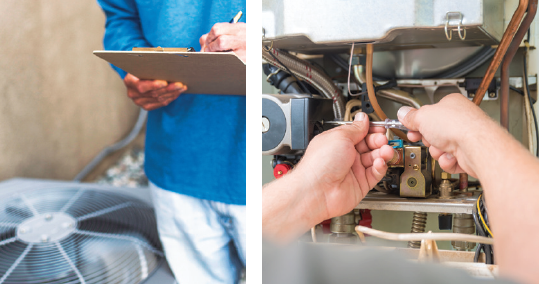
Older systems may also benefit from replacement of the original thermostat with an upgraded programmable model that will automatically adjust HVAC operation (and thus energy usage) based on living patterns. “You don’t need your system running at full capacity when no one is home,” Moseley notes, “and most families can do with less conditioning during sleeping hours.” The $100 to $250 investment involved (though high-end wifi enabled units may run upwards of $500) has a relatively short payback period, Moseley asserts. “These can also be purchased in home improvement stores for DIY installation, but we get lots of calls to come out and make the interface with the HVAC system work properly,” he adds.
Another recommended HVAC accessory is a humidifier, an add-on unit that will keep indoor humidity at recommended levels of 40-60 percent (somewhat lower with really frigid outside air) during heating season. “Really dry indoor air leads to weakened furniture joints, spaces in hardwood floors, separations in moldings and trim,” Moseley says. “It’s murder on pianos and guitars, and leads to scratchy throats, crusty nasal passages and reduced resistance to airborne germs.”
While your HVAC system isn’t the most glamorous feature of your home, it’s among those that have the most influence on comfortable living. Giving it the attention it deserves will help make sure it stands at the ready to deliver problem-free operation.
Useful “dirt” regarding furnace filter selection
Furnace filters are graded on their particle-trapping abilities using the MERV (Minimum Efficiency Rating Value) scale. Most residential filters range from 4 to 14 on the 16-point MERV scale. Manufacturers like to use traditional spun fiberglass filters with low MERV ratings because they filter out the big particles but with very little restriction of airflow, allowing for efficient operation of the unit. Maintaining manufacturer’s specified airflow is also important to getting maximum life from the system’s blower motor and heat exchanger.
An inexpensive MERV 4 filter captures 80 percent of airborne particles 50 microns and larger, but only 25 percent of the particles in the 3 to 10 micron range. An upgrade to a MERV 7 or 8 pleated filter, which will capture 80 to 95 percent of particles 5 microns and larger, provides more aggressive filtration and a reasonable balance between cost and filtration efficiency.
If you’re obsessed with clean air or have family members with allergies or low-immunity issues, high-efficiency (MERV 11 and higher) filters can be considered, but will need to be changed monthly to preclude particle buildup. Such buildup can severely inhibit airflow, overtaxing the blower motor and leading to system freeze-ups. An ultra-high efficiency filter should only be installed on advice of an HVAC technician who may be able to make adjustments that will help the unit operate properly despite increased airflow resistance.
In sum, the choice of which filter to buy for your furnace is influenced by how much you want to spend, how pure you want the air, and how diligent you are about changing the filter.
air quality, home building, home comfort, home maintenance, homeowners, hvac, new homeowners, real estate, terrell E. Moseley inc
